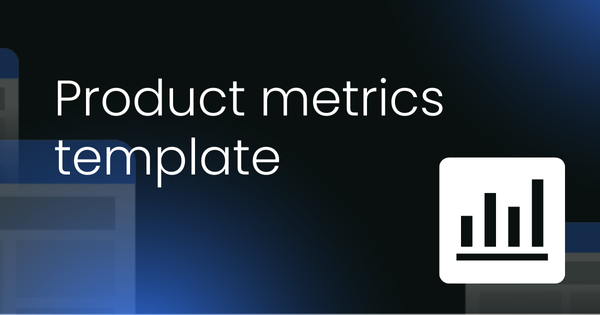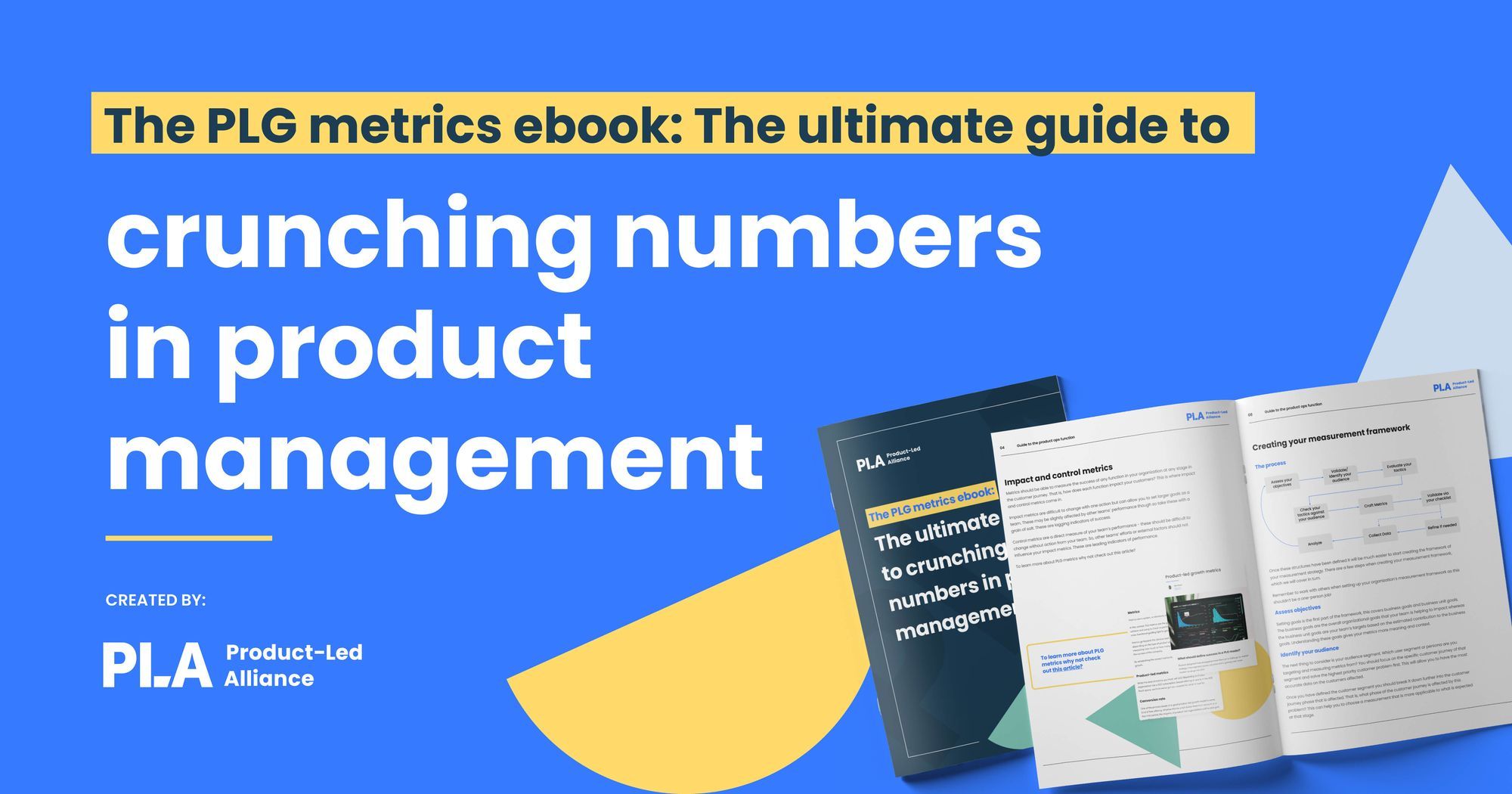KPIs. What’s one more acronym to throw your way in the business world? But trust me; this isn’t one you want to skip out on. Key Performance Indicators (KPIs) are crucial to your business’s success.
Not only do KPIs help indicate how customers feel toward your business, they’ll also give you the tools to act on that feedback and data. With KPIs, you can set targets, understand objectives, and even compare yourself to business peers.
And that’s pretty magical.
The four categories of product KPIs
Confused about which metrics to track? Consider these to help guide your way.
Objective goals
Look at how the company is doing overall. What are your profit margins and return on investment? Total revenue? Once you have these, you’ll have a good picture of your company’s health. Executives focus more on these big-picture snapshots. This will give them a sense of what to focus on if something lags.
Operational metrics
Operational metrics are more for management and look at a smaller timeframe, like month-over-month or day-over-day. Focus tends to be on geographical locations, daily sales, and employee performance.
Functional KPIs
Functional KPIs are getting into the nitty gritty of specific departments. Did you post something on social media? How much engagement did it get? What were the responses to it?
Leading & lagging metrics
Leading KPIs focus on trends that can and will change over time, so make sure you’re on top of them. Lagging KPIs focuses on the process of confirming those trends. Can’t really have one without the other, so don’t skip on either!

Making your product KPIs SMART
Still confused about which exact KPIs to use? There’s a handy dandy acronym for that called SMART.
S: Specific
Specific KPIs are focused on reducing misinterpretation. They are straightforward so that everyone can act on them without confusion.
M: Measurable
You want data that’s presented in qualitative forms. Thinks numbers and percentages which are easy for everyone to read and understand.
A: Achievable
Are the goals you set from the data collected attainable? Can your employees work towards them feasibly?
R: Realistic
Are the KPIs suitable for your business growth?
T: Time-bound
KPIs that reflect a certain time period for your goals.

It’s important to remember that KPIs can have some limitations as well. Some data can take a long time to collect for an accurate reading. Other KPIs require constant monitoring, which can take time to be actionable.
It’s also a possibility to fall into the trap of becoming hyper-focused and pushing employees to unrealistic goals. This can cause burnout and create resentment in the workplace. So, chose and set your goals wisely with KPIs.
11 product management KPIs to track
Now you have a generous understanding of what KPIs are, how to choose them based on your goals, and how to act on them. So, what KPIs should you be monitoring?
1. Customer Acquisition Cost (CAC)
Want to know how much it costs to onboard a new customer? This metric is for you. CAC is calculated by dividing the cost of sales and marketing by the number of new customers acquired. And if your acquisition cost is higher than your profit, the business is in trouble.
You’ll need this number to improve profit margins and scout the best way to acquire new customers. If the old way isn’t working, it’s time to try something new.
2. Customer Retention Rate (CRR)
This KPI measures customers who remain with a business after a certain period of time. This metric is hugely important as it’s a lot more expensive to acquire new customers than it is to retain your existing base. In fact, it’s 25 times more costly to attract new customers.
Want customers who will refer your business, promote your brands on social media, and give valuable feedback? This is built through loyalty. Every industry has an average retention rate. Unsurprisingly, Media has the largest with 84%, while Software comes in at 77%. Not too shabby.
3. Churn Rate
If CRR measures customers you’ve retained, churn rate measures those you’ve lost. To grow your business, CRR must exceed the churn rate. Sound scary? Don’t fret. Understanding this can help you identify flaws in your business model. If your boat has a hole in you, you’d want to know where to patch it up before you sink.
A disadvantage here is not knowing if the customers you’ve lost are new or long-term. Maybe someone new tried your product, and it was a ‘no’ for them. Or maybe you updated your product or pricing and lost customers who didn’t like the change. Churn rate can’t tell you this, but at least you know you have a problem to seek out with this KPI.
4. Monthly Recurring Revenue (MRR)
MRR measures the expected monthly revenue. Pretty simple, right? This KPI allows you to see if your business is expanding or growing over time and gives you a sense of long-term viability. This can help you reduce risk and raise capital in the best way for your business.
MRR can be broken down further. New MRR focuses on revenue only from new customers, and remember how expensive it is to acquire new customers? You can also look at Expansion MRR, which tracts additional revenue from current customers. And if you want to add one more because you don’t have enough MRR in your life, add Churned MRR to see how much revenue you’ve lost due to subscription cancelation or customers lost.
5. Average Revenue Per User (ARPU)
Since we’re on the theme of revenue, let’s look at ARPU, which is the revenue generated over time by each user. This metric is more geared toward SaaS products and can be broken down into two types: per new account and per existing. Per new account considers revenue generated after a subscription change and per existing tracts revenue before a price change.
To calculate this, you need the formula of monthly recurring revenue divided by the total number of accounts.
This handy metric is helpful since you don’t need to track one-off sales, and it highlights the quality of users. It can also determine how much to spend on new customers and how to build your pricing strategy.
6. Number of Sessions Per User
Have a website and want to know how many people are sticking around? This is the metric for you. This KPI measures how often a person visits your site, allowing you to track the visitation frequency. It’s often calculated over a month and can be determined by the total number of sessions divided by users.
You’re looking for an average number of around 1.4, which may seem low, but indicates good site health. Manage to crack above 1.6? You’re on a roll and in the 20% of websites. Almost unheard of but not totally unachievable is 1.9. Only 10% of websites hit this number, but that doesn’t mean you can’t strive for it.
7. Traffic (organic and paid)
This KPI usually refers to website engagement but can be used for software and apps. It’s best to measure the number of visitors, pages per visit, and average time of visitation. Understanding these will allow you to see how to drive website traffic best and increase engagement.
Organic traffic refers to unpaid visits found through search engines, while paid traffic refers to marketing campaigns that bring customers to the website. Organic can be boosted through website optimization, using targeting keywords and strong metadata. Think SEO. This is your best friend.
Paid traffic is generated by ads created by the company or a marketing agency. This can be done in many ways, but open auction bidding like Google or Amazon ads are the most common. Companies or marketers bid on keywords, and if your bid wins, you’ll appear for those keywords. It’s highly competitive and costly, but it can be very effective when done right.
8. Bounce Rate
Wonder how many people leave your website after only one viewing? This is your bounce rate, which is not the same as an exit rate, surprisingly. While an exit rate refers to the page someone leaves on, the bounce rate is leaving after only viewing one page.
Have you lost someone’s attention so quickly? Don’t lose them due to poor site optimization. This metric will give you the power to see where your website has gone astray and the potential to fix it.
9. Daily Active User (DAU) / Monthly Active User (MAU)
Both these metrics look at time-related data and offer a quick health check on your business. Are customers using the service or product you provide often? This metric is highly dependent on the type of service you provide. Not every service is used daily, so consider this when looking at your data.
10. Net Promoter Score (NPS)
So, you know how often people use your website, but how likely will they recommend your product? That’s what NPS measures, though this one isn’t determined through hard numbers. This is measured through a direct survey, usually on a scale of 0-10. This is one of your best metrics for understanding customer loyalty and how well your word of mouth will be.
But you don’t have to stop at one question, like, “how likely are you to recommend this product?”. You can follow up with specifics to dig further. “Why would you recommend this?” “How often do you use this product?”. This is your chance to dig deep and get into your customers' minds. Ask for demographics, quality of use, permission to follow up, and so much more.
You need software to ask these kinds of questions, but the more you discover alongside an NPS, the better you can tailor your business or fix issues that creep up.
11. Customer Satisfaction Score (CSAT)
Very similar to NPS, this survey question focuses on customer happiness with a product or service. But while NPS measures loyalty, CSAT targets satisfaction. This is especially useful because it can be implemented at any point in the customer experience.
The only major drawback is that this metric focuses on the present. To consider long-term satisfaction, you must repeat the CSAT survey and look at the data over time.
The importance of CSAT cannot be understated. In 2022, organizations using CSAT rose 8% versus 2021. Want to reduce churn and find unhappy customers? This is probably your best bet. Also, feel free to publish your scores if they’re positive. What a fantastic way to set yourself apart from the competition.
Whew. You made it to the end, and you’ve learned a lot along the way. Now is the time to take action as a product manager and use your chosen KPIs to improve your business. It might not be magic, but it’s pretty darn close.
Want to become a world-class product leader? Why not learn from the absolute brightest and biggest product leadership brains in the industry?
Join us on April 5th for a jam-packed day of learning everything product-led. Get your tickets now!




 Follow us on LinkedIn
Follow us on LinkedIn






